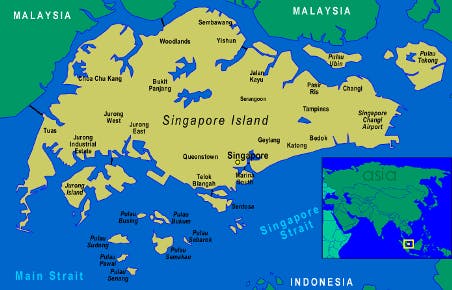Singapore Expands Access for U.S. Beef

Effective May 5, Singapore granted expanded access for U.S. beef, removing most – but not all – cattle age and product restrictions.
Some requirements unique to Singapore were maintained, so U.S. slaughter and processing establishments must still maintain their Singapore Export Verification (EV) programs and make amendments to their quality manual to reflect the following eligible product scope:
- Beef and beef products derived from cattle of all ages that are born, raised, and slaughtered in the U.S., including feeder cattle born in Canada and Mexico that were raised and slaughtered in the U.S., are eligible.
- Beef and beef products derived from calves less than 12 months of age imported from Canada for direct slaughter are eligible.
- Beef and beef products derived from cattle imported from Canada for direct slaughter can only be boneless cuts from animals less than 30 months of age.
- Beef and beef products derived from cattle imported from Mexico for direct slaughter are not allowed.
EV-approved plants only need to update their quality manual for their EV program, and will be eligible to ship the expanded range of products outlined above once these updates are completed. However, non-EV-approved establishments are not approved to ship to Singapore until their EV program has been approved and audited by the Agricultural Marketing Service (AMS).
Processed beef and offal products are eligible for export to Singapore, but must also be produced under the Singapore EV program with the same requirements listed above. In addition, exporters must submit an application to the Singapore Agro-Food and Veterinary Authority (AVA) that includes information on the establishment and production of specific products. Information needed for processed beef and offal export and submission instructions are included in this FAS GAIN Report.
Singapore abides by Codex maximum residue levels (MRLs) for ractopamine in beef muscle, fat, liver and kidney. However, AVA requires that “internal organs” must be free of ractopamine residues. To enforce this policy, AVA requires exporters to provide a certificate of analysis for these products along with their export documentation. USMEF is working to clarify which offal products this standard will apply to, and will notify exporters when this information is available. Exporters new to the market should also note that Singapore limits the use of pathogen reduction technologies (PRTs) to a greater degree than most international destinations.
Singapore is a small destination for U.S. beef, with exports in 2014 totaling 1,561 metric tons valued at just under $17 million. It is a market of regional importance, however, because culinary trends in Singapore tend to carry significant influence in neighboring markets. Last year Singapore’s total beef imports were valued at $233 million, with Australia, Brazil and New Zealand being the leading suppliers.
While Singapore does not require halal certification for imported beef, halal beef is preferred by many of its importers and distributors. The country has a significant Muslim population and a growing number of tourists from the Middle East, so many foodservice outlets choose to serve halal beef in order to capture these customers.
As an additional resource for exporters, USMEF’s Technical Services Department will be publishing an updated guidance document for Singapore on its Guidelines for Exporting to Individual Countries web page. If you have questions regarding export requirements for Singapore, please email Travis Arp or call 303-623-6328.
